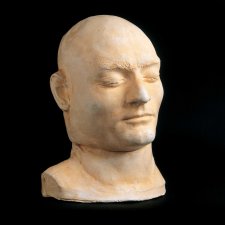The Felons Apprehension Act was something a colonial government could keep up its sleeve in the event of an especially formidable criminal adversary. The Victorian parliament accordingly passed the legislation in late October 1878, within days of the killing of three police officers by Ned Kelly and his gang at Stringybark Creek. The bushrangers ignored the official order to hand themselves in and thus were declared outlaws, meaning that any citizen with the gumption to do so could shoot or apprehend them without fear of having to account for such actions in court.
Ned, his brother Dan and mates Steve Hart and Joe Byrne consequently went to ground, resurfacing on 9 December 1878 at a sheep station a few miles from Euroa. There, they engaged in what seems to have been standard station hold-up procedure: taking and detaining hostages, brandishing firearms, demanding refreshments for themselves and their horses, and allegedly sampling items from a hawker’s wagon load of merchandise. 'Each man arrayed himself in a new rig from head to foot, and even such luxuries as soaps and perfumery were not despised, the bushrangers pouring bottles of the latter over themselves, and pocketing the former for future use', or so The Age said.
The next morning they sabotaged telegraph wires, facilitating the hold-up of the Euroa branch of the National Bank later in the day by Ned, Dan and Steve. 'The robbery was altogether a most audacious one, and at the same time was cleverly planned, for although it was committed in broad daylight, everything was so well-managed that the residents of the township had not the slightest idea of what was being done'. The outlaws, who had scored close to £2000 from their efforts at the bank, then 'returned to their haunts in the ranges', Ned Kelly and Joe Byrne having taken the opportunity to pen a letter in which Ned largely attributed to police persecution and cowardice his recourse to arms and bushranging. 'I was outlawed without any cause and cannot be no worse & have but once to die', Kelly stated, '& if the Public do not see justice done I will seek revenge for the name and character which has been given to me and my relations while god gives me strength to pull a trigger'. One copy of the letter was sent to a police superintendent, and another to a member of parliament whom Kelly hoped would help lend credence to his claims. Meanwhile, 'great excitement and a general feeling of insecurity prevails all over the district', no one knowing where or when the gang would next make an appearance.















